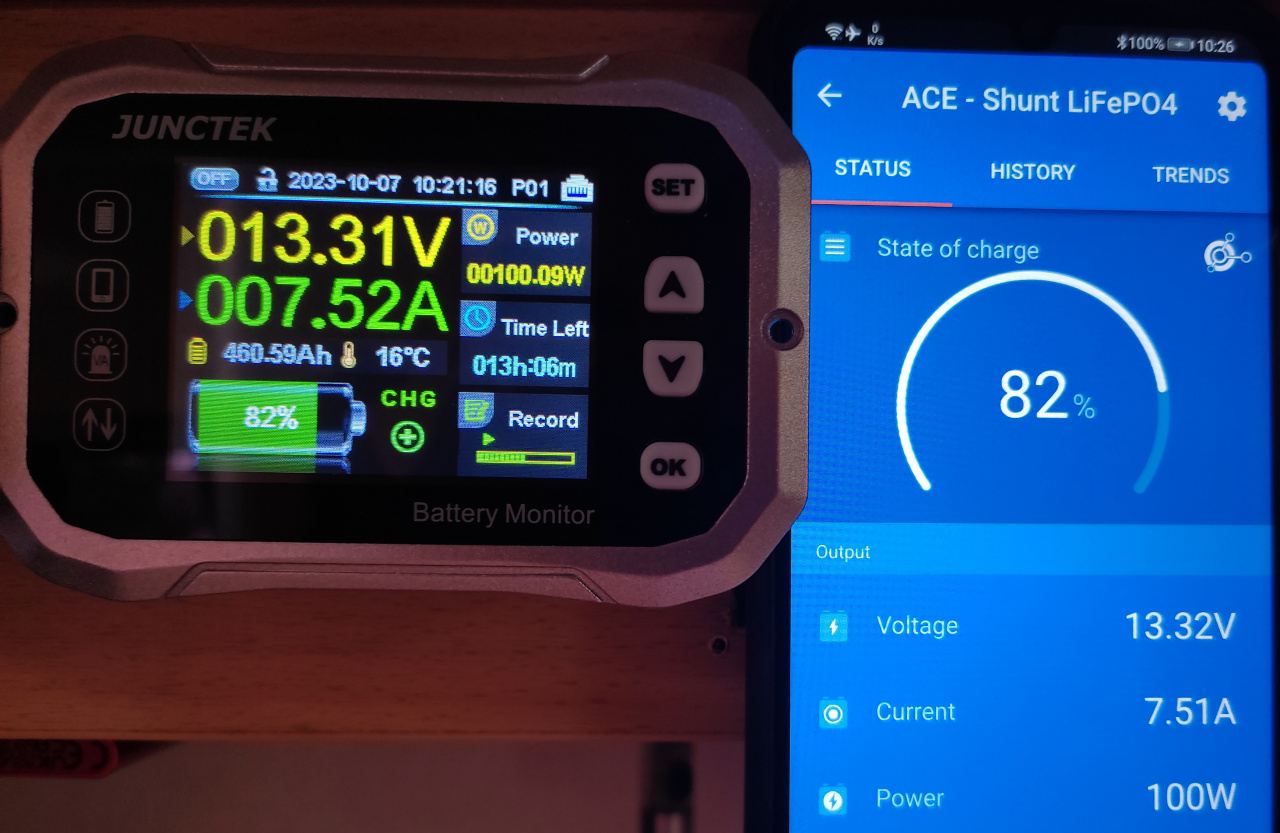Hello community,
I have BMV-712+shunt connected to 2x24V LIFEPO4 batteries in series (48V) system, capacity 200Ah. System cabling is verified and OK. My re-charger specs are: max 58.4V, ("48V"), 230V AC, 10A.
Both batteries are 200Ah and both have BMS computer built-in. Both batteries have a small LCD display in them that can display the SOC percentage, voltage and temperature of the battery.
This is a new system and I have had only a few days to play with this.
Questions:
1. Does the BMV-712 perform SOC calculation solely based on the battery voltage? If not, why not?
2. Does the BMV-712 only use current (amps in/out) when it calculates the SOC? If yes, then why?
3. Is the SOC calculation a hybrid model (based selectively on voltage and current) ?
The problem with method 2 is that the battery BMS eats current all the time (unless if the battery is completely shutdown from the battery power switch). Normally the BMS is "ON" and it eats amps but Victron BMV is blind to this consumption because it happens inside the battery (=this battery consumption DOES NOT flow thru the + and - minus cables of the battery).
Thus, if the BMV SOC calculation is solely based on current (A, in/out) them the SOC can not be correctly calculated: battery is slowly consumed by BMS but SOC will remain 100% all the time because BMV can not see any current. This is (IMHO) clearly the wrong way to do this.
I suspect that the method 1 is not used. In order for this to be useful the user should be able to type in the battery MAX voltage (=100%) and battery MIN voltage (=0%). Because the BMV DOES KNOW what the voltage is, at any given moment, it would be easy to use voltage as a basis for SOC calculation. However, the VictronConnect app does not have any battery "MIN Voltage" and "MAX voltage" fields that could be inputted into the app, thus, I suspect that method 1 is not in use.
The method 3 would be the best (imho) way to calculate the SOC.
I would be very happy to get some feedback to this matter from somebody who works in the software team at Victron Energy and who could give me an exact answer: how does the SOC algoritm exactly work and what the algorithm takes as input. If only "current" then I think it is simply the wrong way.
Comments, anybody?
Thanks!
Cheers,
-M

